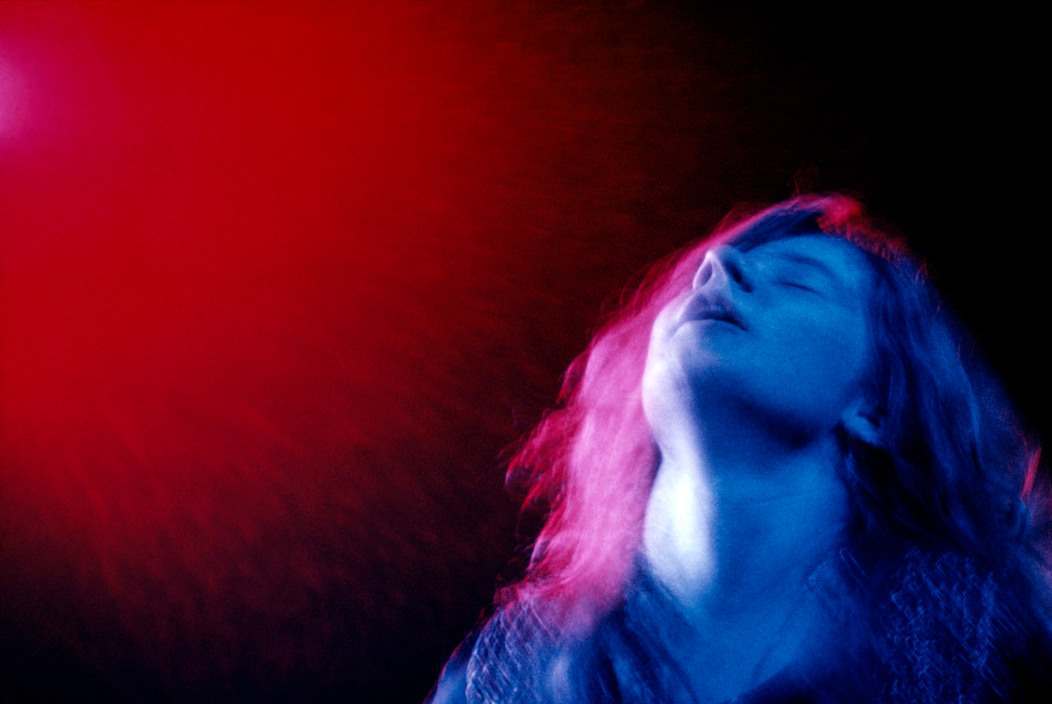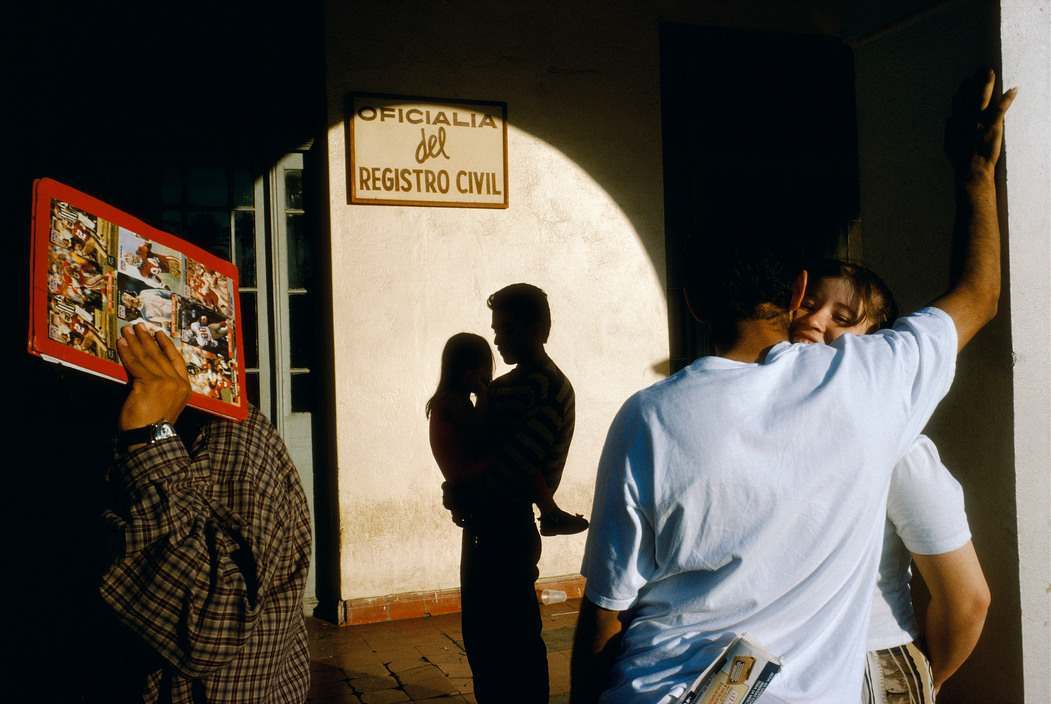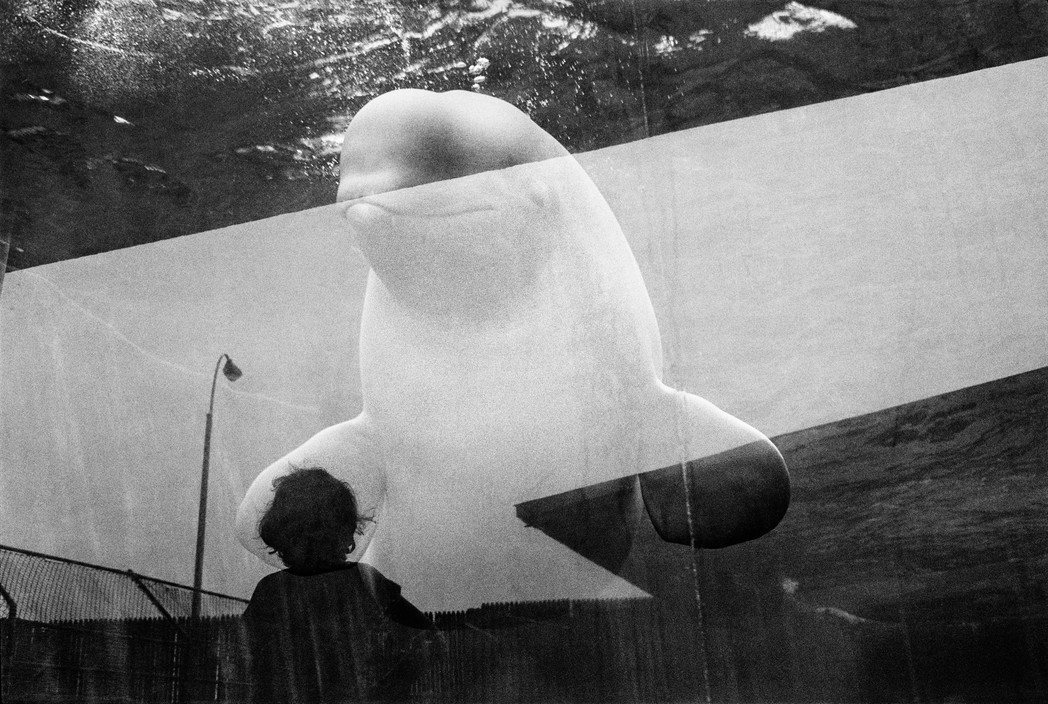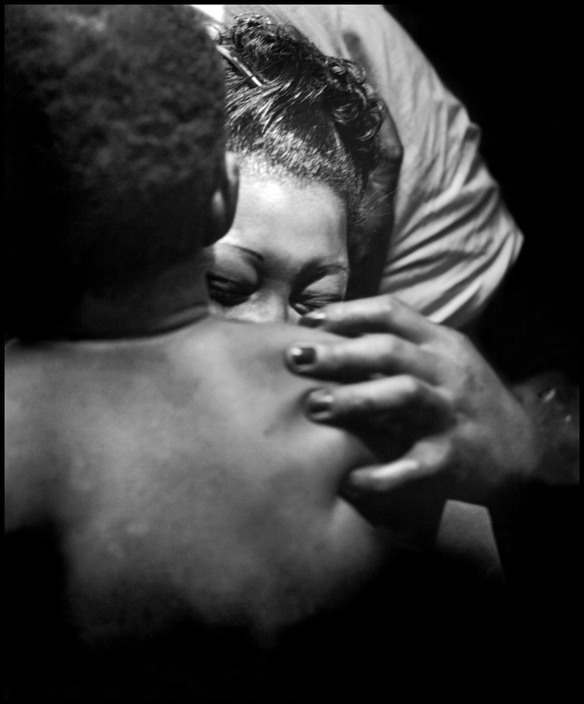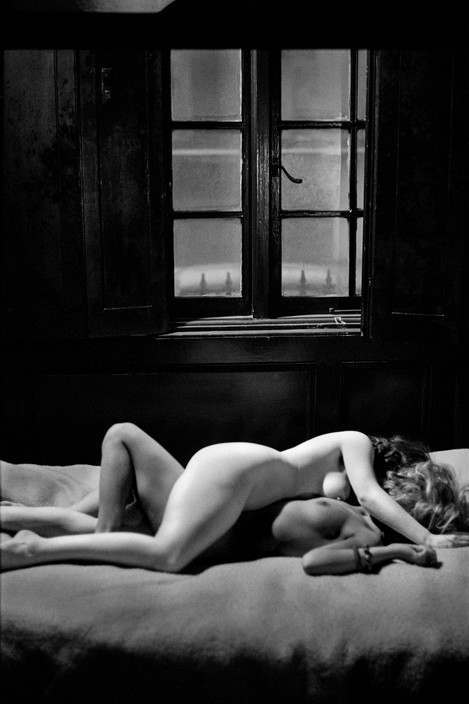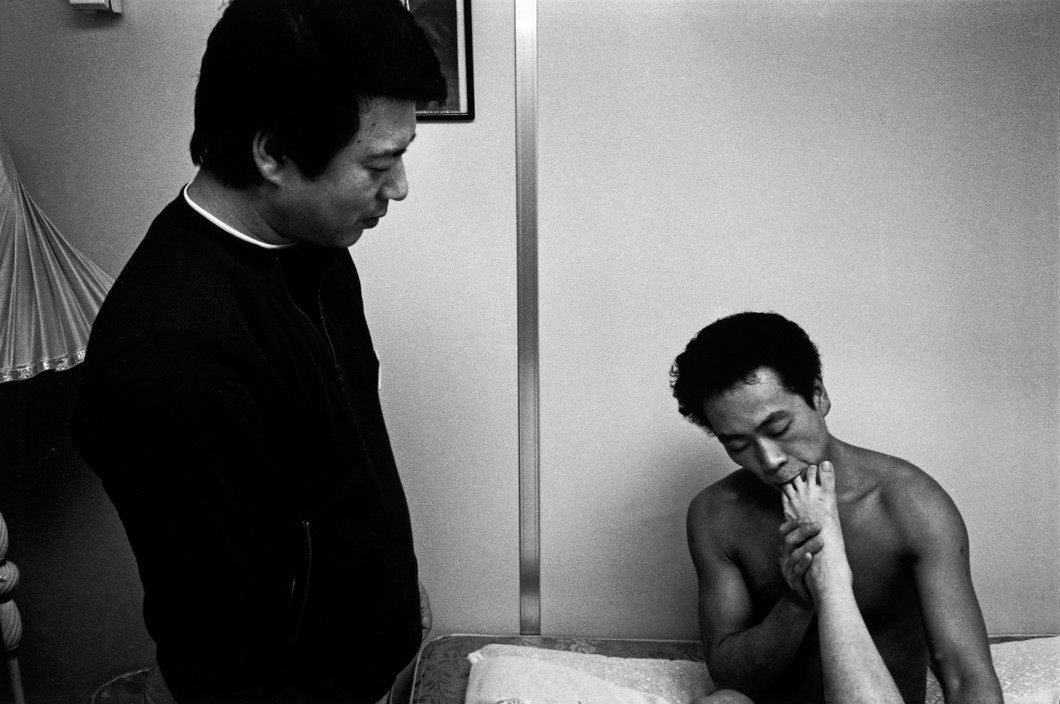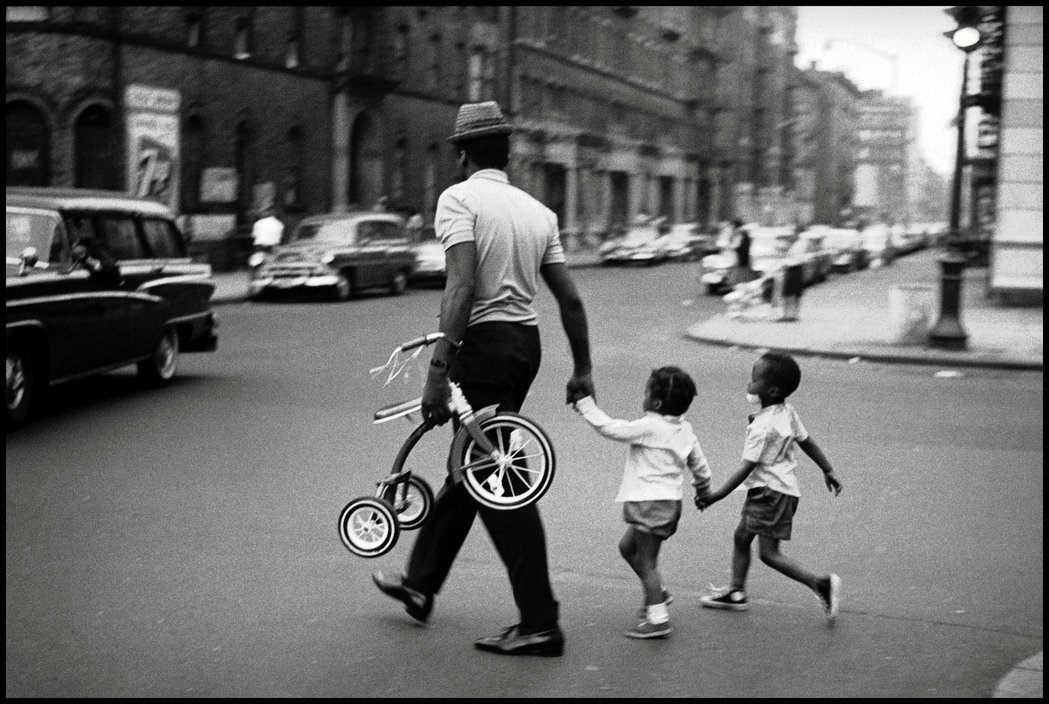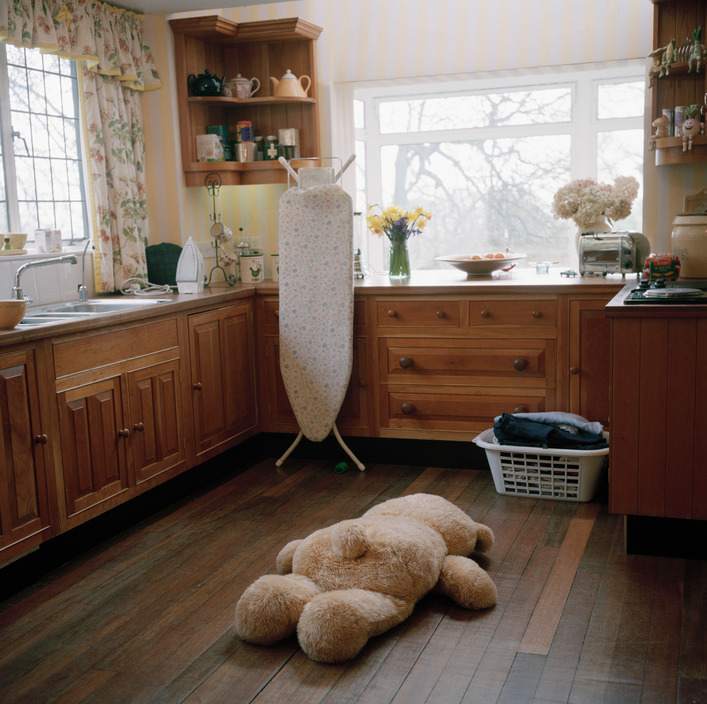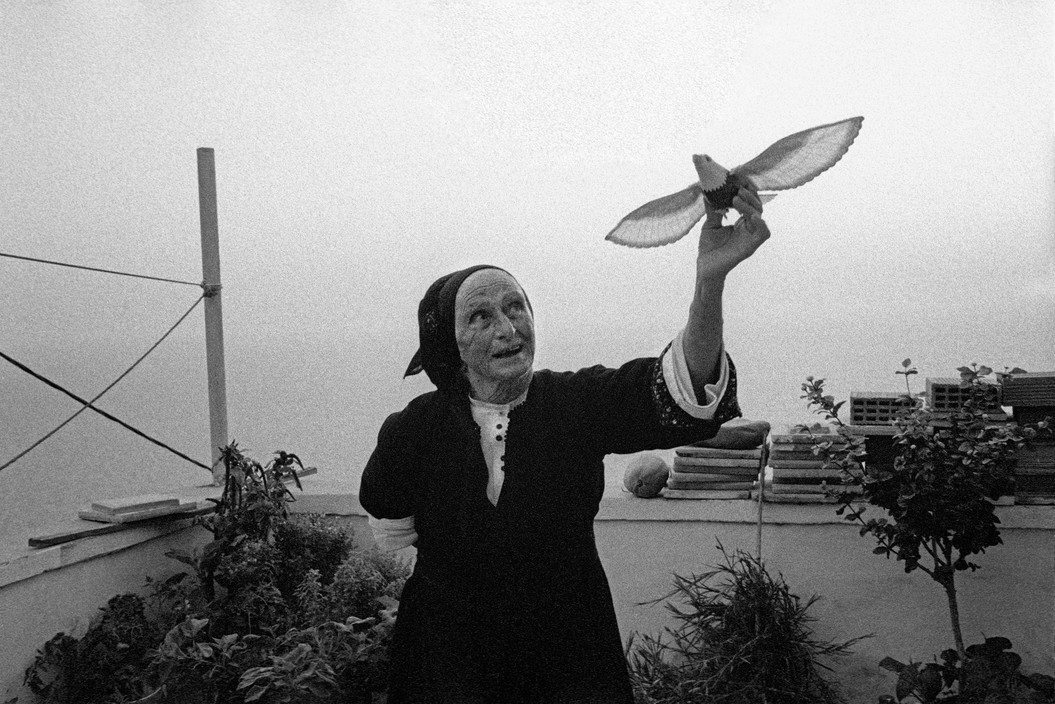In Up Close & Personal, Magnum Photographers reveal their most intimate images, “exploring the delicate area between public and private to express the role that proximity and connectedness play in their photography.”
From Magnum founders Robert Capa, George Rodger and David Seymour to the youngest members of the collective, the project brings to the fore a plurality of points of view, and brings together both classic and contemporary images.
“Photographing Janis Joplin in concert was a very personal experience. I felt connected to her through my viewfinder. Joplin’s performance was so intense that it has stayed with me since the moment in 1968 that I photographed her. Her passionate voice shocks the listener with its power, and I have used her voice as an inspiration for my photography, trying to shock my audience into feeling what I do when I snap a photograph.” — Paul Fusco
Werner Bischof
“There is war in Europe. In Switzerland, two people meet in the peaceful privacy of photography studio — a vibrating mood. The photographer points a projector with a grid film onto the naked torso of the model. This photograph is taken. The 1940 diary of my father reads: ‘A beautiful woman resembles a flower – she is beautiful in its external form, she has vibrations and harmony… But be happy with the beauty without searching for depth.’” – Marco Bischof, son of Werner Bischof
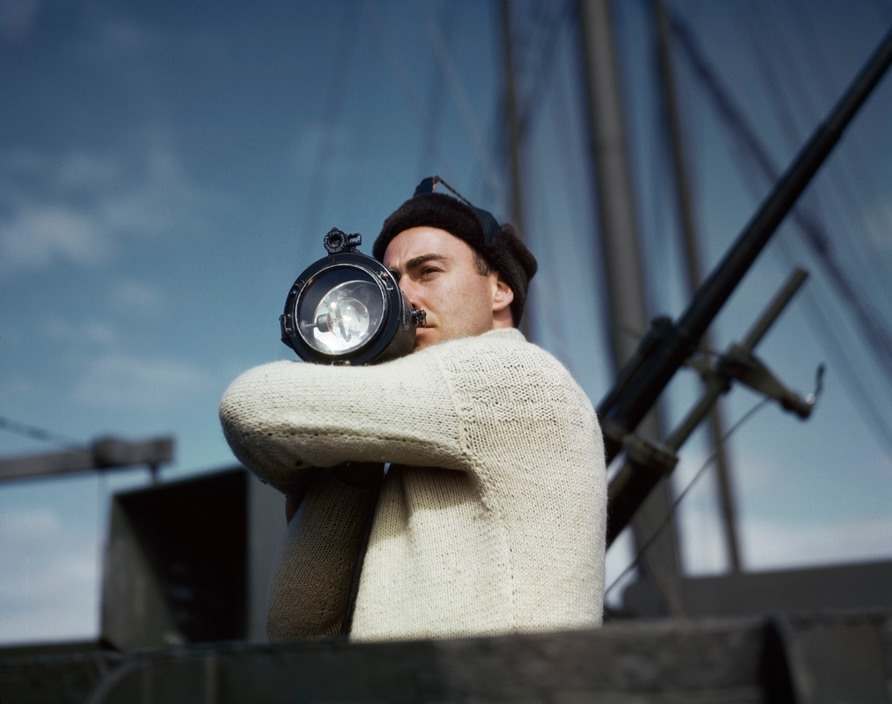
1941. A crewman of a Cunard freighter signals another ship of an Allied convoy en route to Great Britain from the U.S. Their ship is carrying seven airplanes, two torpedo boats, and twelve passengers who agreed to travel at their own risk. The captain and his crew are Norwegian and have crossed the Altantic many times during the war.
“If your pictures aren’t good enough, you’re not close enough” — Robert Capa
Alex Webb
“In 1996 after returning from the US-Mexico border, I showed my new work to Rebecca Norris, who I’d been seeing for some six months. When we came to this photograph from Nuevo Laredo, Rebecca smiled bemusedly and said, ‘muy romantico.’ Looking again, I began to see that it does indeed strike a different note. Although inhabited by those deep shadows that characterize much of my border work, this particular photograph is quieter, more lyrical. It’s as if its human moments—the couple embracing, the father holding his child—somehow manage to keep the darkness at bay, at least briefly.”
“My daughter Marie and I discovered this beluga whale in at the New York Aquarium on Coney Island. I was in fact in New York for three weeks, attending that other aquarium, the Magnum Meeting.
Little did my 11-year old daughter and I realise, at the time, that this beautiful animal was in fact ‘Blanchon’, the hero of a very famous Canadian documentary film, Of Whales, the Moon and Men, directed by humanist film-maker, Pierre Perrault. Eventually, Pierre became a dear friend. He was an incredible filmmaker, in the style of Leacock, Wiseman and Rouch.
This image is like a cocktail of intimacy, bringing together my daughter, the great animal, and, subliminally, my friend Pierre, our shared passion for humanist approaches and documentary films.
I remember the guard of the aquarium was furious because Blanchon was a very curious animal, clearly happy to see somebody so close to the aquarium in a place not usually allowed to tourists. The other tourists, politely standing where they were supposed to, looked on in envy…” — Jean Gaumy

South Africa. Gauteng. Johannesburg. Fordsburg. Affection between two people in a multi-racial cafe. 1961
Ian Berry
“While shooting for an African magazine in South Africa, I heard about this café on the outskirts of Johannesburg which had some great African musicians playing there at night. More interestingly for me perhaps was the rumour that whites were attending, this at a time when multi-racial gatherings were illegal in South Africa. I had just arrived. Standing in the doorway surveying the scene, I noticed the warm interplay between the African couple in front of the jukebox with a white guy at the table behind. Sometimes these moments catch one unprepared; happily for me I’d arrived with a camera around my neck and was able to capture the moment.” — Ian Berry
Wayne Miller
“When I spotted an interesting scene or situation, I didn’t try to hide myself or my camera. Instead, I often approached the people involved. ‘Please,’ I said, ‘pay no attention to me. Just keep doing what you’re already doing.’ Believe it or not, they usually did. Once I even photographed a veteran prostitute on the job with one of her regulars. They didn’t mind. Afterward, when asked if I had gotten the pictures, I said that it had happened a bit fast; he then invited me to come back next Tuesday, when he would arrange for me to have all the time I needed.” – Excerpt from: Wayne F. Miller, Chicago’s South Side, 1946-1948
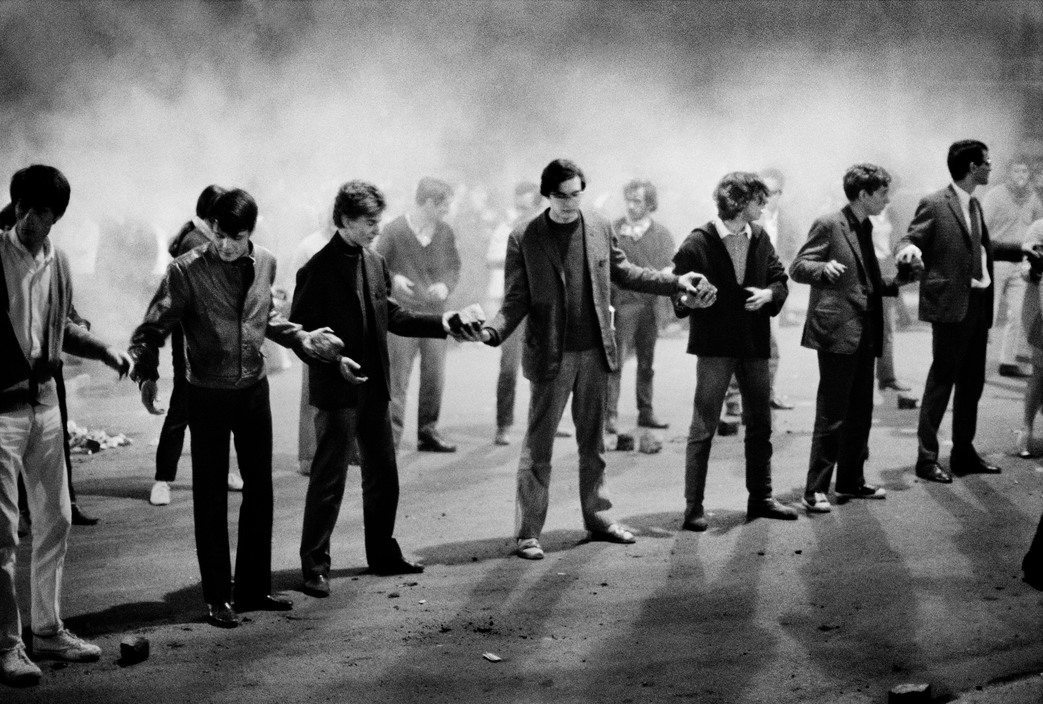
FRANCE. Paris. 5th arrondissement. Students in a chain passing cobble stones for the barricades, Gay Lussac Street. May 10th 1968, by Bruno Barbey
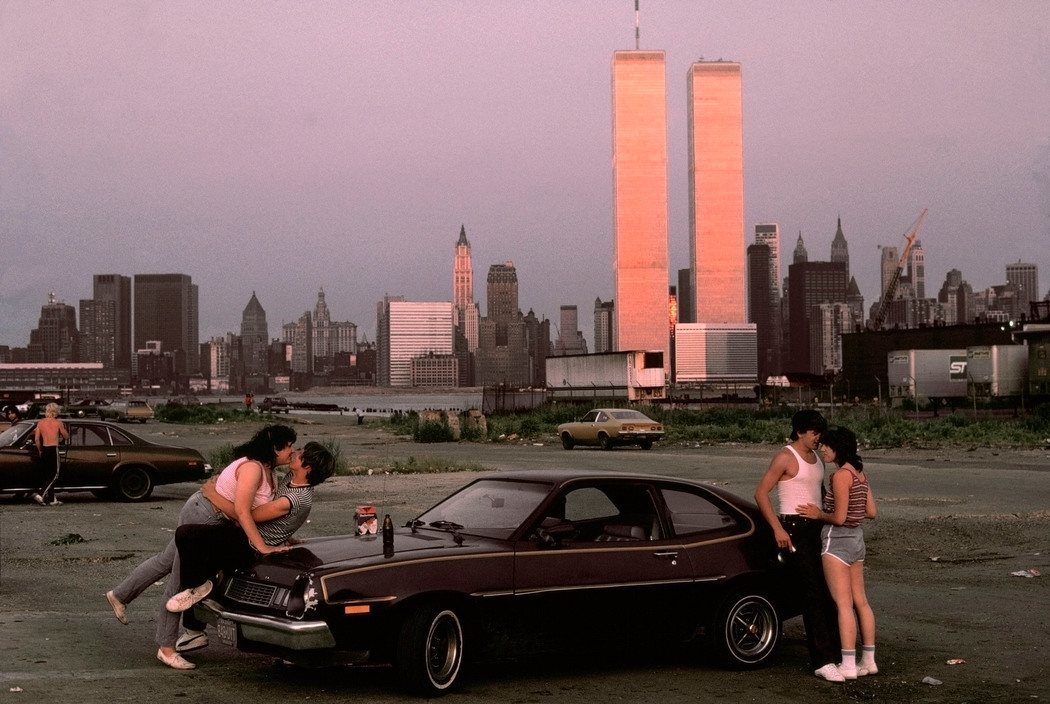
USA. New Jersey. 1983. Downtown Manhattan with World Trade Center towers, seen from “lover’s lane’ in New Jersey.Thomas Hoepker
“I took the picture in the fall of 1983, at sunset at the old docks in New Jersey with a view towards the World Trade towers in New York City. I had heard that there was a traditional Lovers’ Lane, a meeting place of young people in their cars, bringing booze and sometimes drugs. The sun was setting and the towers across the river were glowing before it became too dark to take more pictures.” — Thomas Hoepker
“Photography is the perfect occupation for the shy person. The camera gives one an excuse to be somewhere and it provides something to hide behind. I am shy and come from a Chapel background—uptight. During the 60’s, I had a very large flat in London which was continually full of ‘staying’ friends. One evening, by mistake, I opened the door on intimacy. I was extremely embarrassed and uncomfortable—they thought it very funny.” – David Hurn
“What could be more intimate than a Tokyo sex school (whatever that is), particularly lesson 437B, the Sucking of the Toes? I spent five months trying to become intimate with Japan, but even when I got very close, I remained on the outside. The glass wall of language separated us. I could see inside, but not really understand what I was seeing.
It might have been better if I knew what was going on here. Or maybe not, because in my ignorant curiosity I had to look harder, and let my imagination play. So we became more intimate, in an unexpected way.” – Richard Kalvar
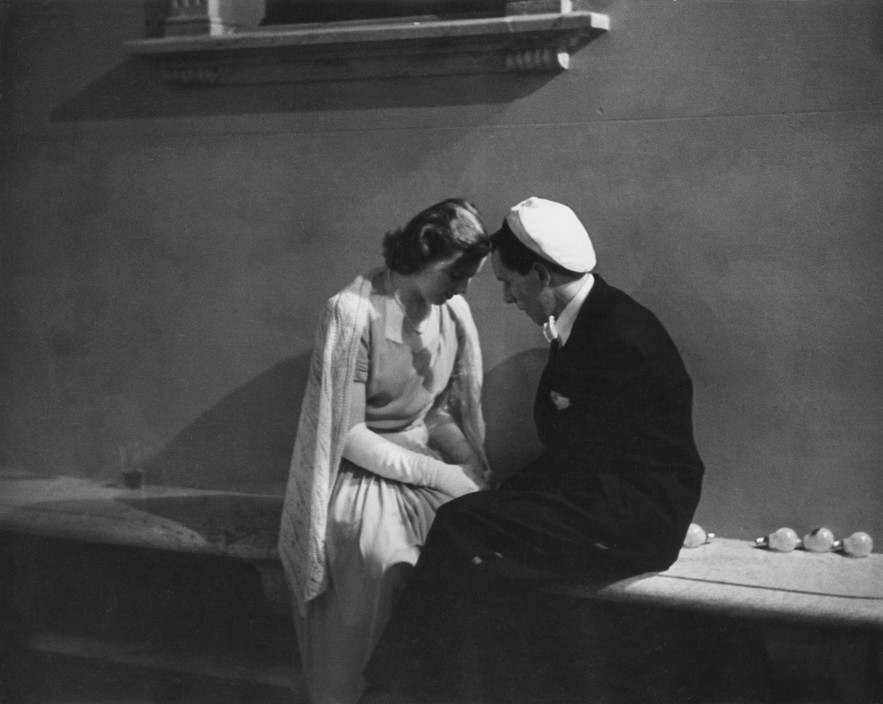
The reception is over and the guests have left. All except a young couple – two of the young people invited to the Nobel ceremonies to give them a chance to meet the great intellects of the day.
“The reception is over and the guests have left. All except a young couple – two of the young people invited to the Nobel ceremonies to give them a chance to meet the great intellects of the day.” – David Seymour

FRANCE. Cote d’Azur region. Alpes-Maritimes department. Town of Antibes. On the top of the lighthouse. Beginning of September, 1956.
“This is one of the very first pictures I took. It was 1956, at the top of Antibes lighthouse on the French Riviera and I was a young boy. The woman in the middle with her hands in her hair and a bright smile is my mother. As the wind blew up her skirt, and before Marilyn made the move famous, I stopped hiding behind her. I was 15 years old, but it didn’t take me seven years to develop the itch to take pictures!” – Guy Le Querrec
“This photograph, which might be entitled ‘First Encounter’, was made on Main Street in Daytona Beach, Florida, in 1988 during the annual Bike Week—when thousands of bikers pour into the small town to ride their bikes around and have fun. Main Street was lined with parked motorcycles, their owners perched on the seats watching the parade of roaring bikes go by. Looking for pictures, I had my eye on this female biker with a beautiful body when a male with a beautiful body approached her. Cutting out the faces, I concentrated on the handshake: the first encounter of two bodies. When I left, they were engrossed in deep conversation. Who knows what happened after that?” – Constantine Manos
“The presence of the photographer changes the atmosphere the moment the subject becomes aware of the camera… What I learned was not technique, but that if the photographer cares about the people before the lens and is compassionate, much is given. It is the photographer, not the camera, that is the instrument.” — Eve Arnold, from The Unretouched Woman. Knopf, 1976
The dining room is the heart of the collective settlement called Kibbutz. It is noisy and lively. I sneaked out to capture this intimate moment: we photographers always try to capture the elusive moment of intimacy.” — Micha Bar-Am
“It is 1963 and a man crosses a street in Harlem, New York. He must be the father of these children as they follow him in a quick sprint, hand in hand though the neighborhood, safely crossing the street as a family. He’s a strong young father and the tricycle is not a burden to carry for his children; he carries it as part of his family’s togetherness. A photograph a photographer took on the open street of an intimate moment: a father being there for his kids, in a moment so intimate, they never knew it had been captured by a stranger with a camera.” — Elke Susannah Freed, daughter of Leonard Freed
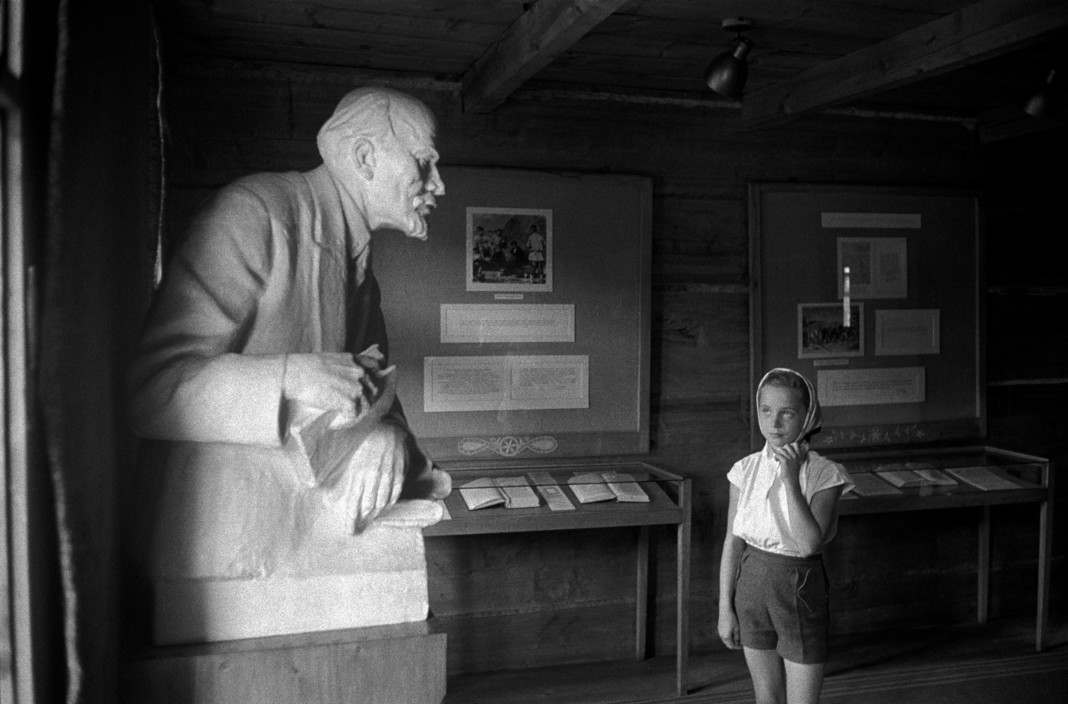
Poronin near Zakopane.
The Lenin Museum, former pub where the first meeting of the Central Comittee of the Russian Communist Party was held, converted into a museum. LENIN spent a few years in Poronin at the beginning of the century.
“A little girl looks at the bust of Lenin in Poronin, Poland, in the pub where the Central Committee of the Russian Communist party first held its meetings, and which was later converted into a museum. In 1956, a group of school children toured the building and viewed the bust of Lenin. After the group moved on, a little girl stayed behind in awe. Her expression gives away both intimidation and curiosity. Not only does this photograph capture a moment of intimacy between an object of art and its viewer, but, more importantly, it depicts the weight of history on a young innocent mind.” — Erich Lessing
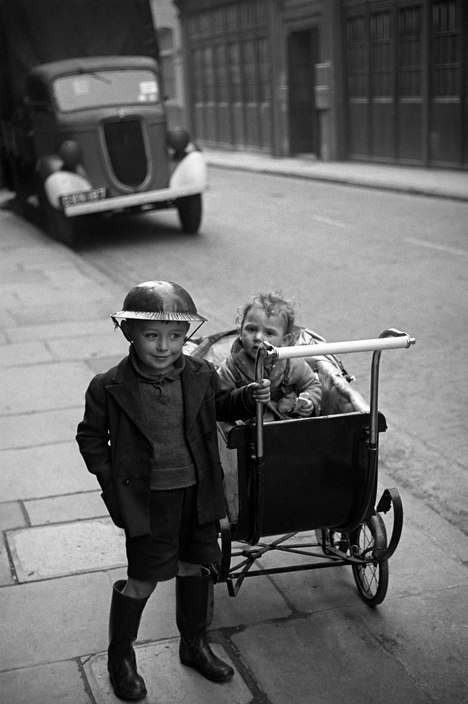
G.B. ENGLAND. London. Steel helmets were worn by all who could get them. Life in London during The Blitz of World War II in1939-40. 1940.
“1940, London. In the East End, a young boy wears his steel helmet with pride.’ As a photographer for LIFE Magazine, George Rodger covered many aspects of the Second World War, beginning with the London Blitz as it affected the lives of ordinary English people. He spent only a short time in London at the outbreak of the war before LIFE sent him to Africa to record the progress of the Free French under General de Gaulle against the Italians and the French loyal to the Vichy Government. His journey was to become the longest and most arduous photographic expedition ever undertaken in World War II, covering early wartime events in West Africa through Eritrea and Ethiopia to Iran, then back to the north-west frontier of India with the British Army, before coming back to Tobruk and the Western Desert. George only returned to England in 1945 after covering the German surrender at Luneburg. His coverage of war ended with the horrifying experience of entering Belsen. This smiling little boy was far too young to realize the horrors of the war to come but his smile reflects the bravery and cheerfulness shown by the people of London throughout those dark days, and the pride of all those young soldiers who marched off to war.” — Jinx Rodger, widow of George Rodger
“It was a while ago but I was on a shoot as part of a branding campaign. My assistant had a friend who had identical, young, blonde, twin boys and we used them in a picture. After the shoot, as we were packing up, I found myself alone in the kitchen with the ironing board, the washing, the flowery curtains, and a large bear lying upside down in the middle of the floor as if dead. I quietly set up my tripod and took a picture. It felt as if I was stealing a moment, and if anyone had come in, I would have had to explain why I was doing it… However, this was the image that came out of that day in the English countryside, it felt secret, surreal and devious; as if I had stolen something intimate and personal: the domestic landscape of a mother doing her best to keep life in order.” — Peter Marlow
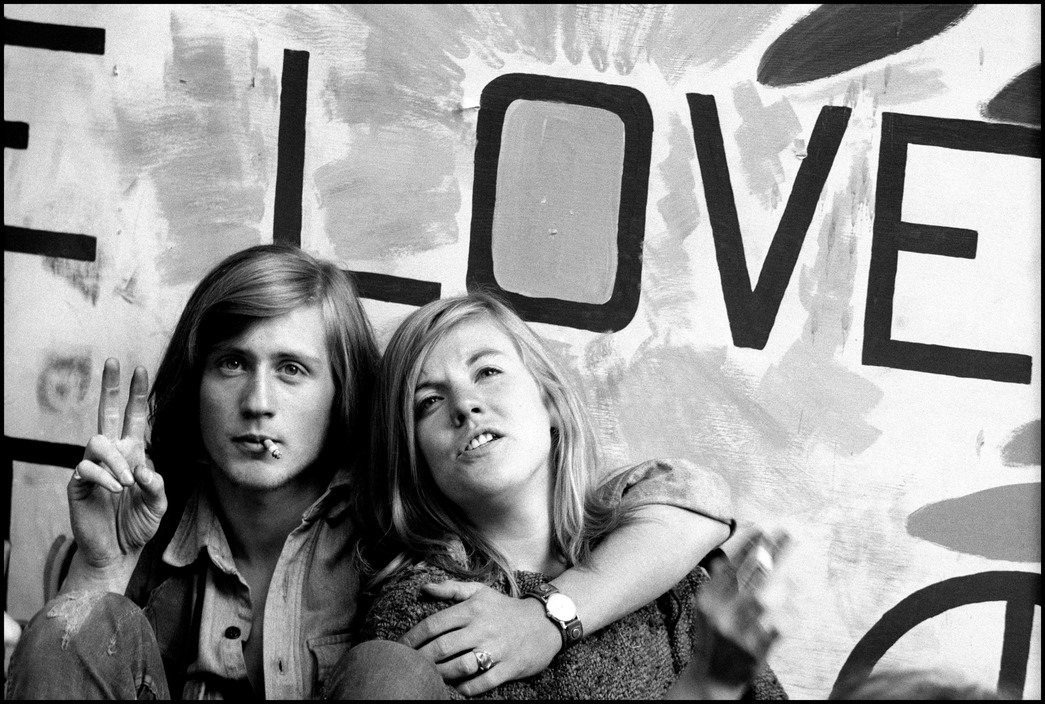
USA. Chicago, Illinois. 1968. Two young protestors rest outside the convention hall during the turbulent 1968 Democratic National Convention.
“Chicago, Illinois: Two young protestors rest outside the convention hall during the turbulent 1968 Democratic Convention. Burt Glinn was a staunch Democrat from a left wing family. He covered the 1948 Republican and Democratic conventions when he was barely out of college at Harvard University. Also by this time, he had already completed two years of service in the Army. Burt captured many fiery, passionate and unselfconscious moments on the convention floor with the delegates. I was very sorry that he didn’t live to see Barack Obama get elected in 2008. Burt was a big believer in Barack’s socially liberal and democratic sensibilities.” — Elena Glinn, widow of Burt Glinn
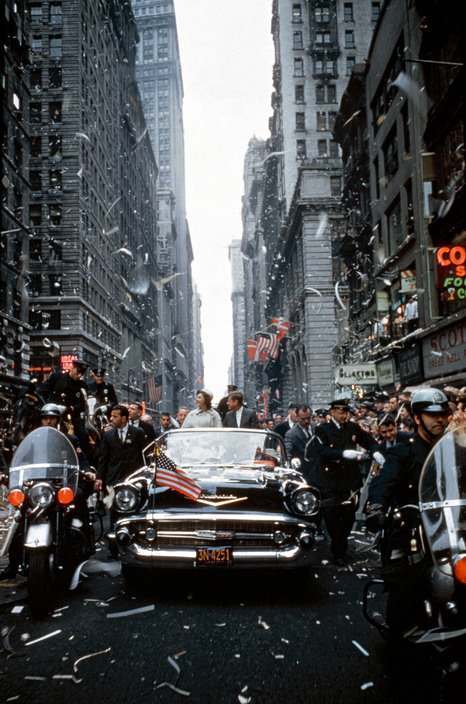
USA. New York City. 1960. Senator John F. KENNEDY and Jacqueline KENNEDY campaign during a ticker tape parade in Manhattan.
“Many photographers find that to make a living they have to shoot pictures as ‘professionals,’ producing work classified as commercial, about which they don’t really care beyond the obvious; they pursue their personal work, the photographs that engage their feelings and that provide satisfaction, ‘on the side.’ I have been very fortunate. The photo essays I shot for Life and other magazines not only gave me a steady, albeit modest, income but also were my personal work. For me there was never any distinction between commercial and personal. I worked on stories that interested and excited me, stories about which I had strong feelings and high hopes, and I directed all my talents and energies into that work.” — From Cornell Capa. Peter Fetterman Gallery, 2002
“Some years ago I was tracing ageing storytellers in the Aegean islands. I came across this 90-year-old woman in Karpathos, one of the remotest and most pristine places in the country. She welcomed me into her modest abode with immense generosity and trust. Among her few belongings, there was this bird; a toy that someone had left there. It stuck out, as it was perhaps the only thing that didn’t have some very specific use, so I asked her. Her eyes lit with joy. She asked me to follow her outside, to show me all the things her bird could do in plain daylight. And there she stood, on the little terrace overlooking the vast sea, playing with her bird as innocent and blissful as a small child.” — Nikos Economopoulos
Up Close & Personal: The Most Intimate Photographs from Magnum” is an invitation to consider the role of intimacy, as interpreted by over sixty Magnum photographers and estates are available to buy for $100 each in the Magnum Square Print Sale from the Magnum Store from 9th to 13th November 2015.
Would you like to support Flashbak?
Please consider making a donation to our site. We don't want to rely on ads to bring you the best of visual culture. You can also support us by signing up to our Mailing List. And you can also follow us on Facebook, Instagram and Twitter. For great art and culture delivered to your door, visit our shop.
